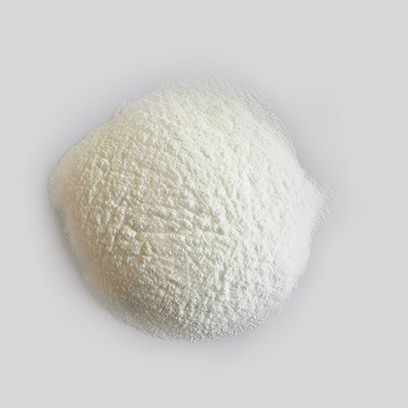
Oct . 18, 2025 11:15 Back to list
TiO2 High-Purity Pigment & Photocatalyst | Fast Supply
Rutile TiO2 R5566 for Inks: Field Notes, Test Data, and What Printers Actually Care About
If you work in packaging or publication inks, you already know that opacity and dispersion can make or break a run. When people say tio2, they don’t just mean “white stuff.” They mean the difference between crisp, high-bounce whites and a shift supervisor staying late to fight flocculation. I spent the past quarter poking around Jindi Industrial Park in Hebei, talking shop about TITANIUM DIOXIDE R5566 RUTILE PIGMENT FOR INK—and, to be honest, I came away impressed by the stability story.

What’s distinct about R5566
R-5566 is a rutile-grade pigment (CAS 13463-67-7) with zirconia and alumina inorganic treatment plus an organic surface package. In simple terms: it disperses quickly, stays bright, and resists UV/chalking—exactly what solvent and water-based ink systems need. Many customers say they get fast let-down and less nozzle spitting on high-shear lines—surprisingly, even at lower dispersant levels.
Industry snapshot
Trends are leaning toward low-VOC, high-opacity at lower coat weights, and better lightfastness on outdoor labels. Sustainability pressure is pushing for longer service life and REACH/RoHS compliance. tio2 grades with clean surface chemistry and narrow PSD are winning because they cut energy in dispersion and reduce waste.
Product specifications (typical)
| Crystal form | Rutile |
| TiO2 content | ≈ 94–95% |
| Rutile content | ≥ 98% |
| Surface treatment | ZrO2, Al2O3 + organic |
| Oil absorption (g/100g) | ≈ 18–22 |
| pH (aqueous slurry) | 6.5–8.5 |
| 45 μm sieve residue | ≤ 0.02% |
| L (brightness) | ≈ 97–98 (real-world use may vary) |

Process flow and testing
Materials: high-purity feedstock refined via a controlled sulfate route (calcination → micronization → surface treatment with ZrO2/Al2O3 → organic post-treatment → drying). Methods: high-shear dispersion tests (Eiger mill), fineness of grind (Hegman), tinting strength vs. standard, and UV resistance in accelerated weathering (QUV, UVA-340). Standards referenced: ISO 591-1 rutile class; ASTM D476 pigment testing; ISO 787 series for pH, oil absorption, residue.
Service life: in outdoor label and flexible packaging inks, printers report gloss and whiteness retention > 5 years under mid-latitude UV, assuming proper binder/overprint varnish. Indoors, color drift is negligible.
Where it fits
- Gravure/flexo inks for flexible packaging (PE/PP, PET, BOPP)
- Offset overprint whites and UV-curable systems
- Decorative laminates, paper inks needing high opacity at low coat weight

Vendor comparison (quick take)
| Item | R5566 (this) | Generic Anatase | Premium Rutile (import) |
| Dispersibility | Fast, low foam | Slower, higher demand | Fast |
| Opacity at equal PVC | High | Medium | High |
| UV durability | High | Low | High |
| Cost-to-performance | Strong | Budget | Premium pricing |
Customization and packaging
D50 tuned around ≈ 0.25–0.30 μm for ink systems; organic treatment can be adjusted for solvent vs. water-based lines. Packaging: 25 kg bags or 500–1000 kg big bags. Origin: Dacheng County, Langfang City, Hebei Province. Compliance: ISO 9001, REACH, RoHS. SDS available on request. Yes, tio2 food-contact questions come up—consult your ink resin supplier and local regulations.

Mini case files
- Southeast Asia gravure house: cut dispersion time by ≈ 18% vs. prior rutile; whiteness L +0.6; no foam spikes at 1,200 m/min.
- EU label converter: outdoor label white retained gloss within Δ60°
Bottom line
If you need a clean, durable white in inks without babying the mill, R5566 is a pragmatic pick. It seems that the surface package hits a sweet spot—enough treatment for stability, not so much that it kills tint strength. And that, in real press rooms, is what keeps jobs moving.
Authoritative citations
- ISO 591-1: Pigments—Specifications and methods of test for titanium dioxide pigments (Rutile).
- ASTM D476: Standard Classification for Titanium Dioxide Pigments.
- ISO 787 series: General methods of test for pigments and extenders (pH, oil absorption, residue).
- ISO 4892 / ASTM G154: Plastics—Methods of exposure to laboratory light sources (QUV) for durability benchmarking.
- EU REACH and RoHS guidance for titanium dioxide pigments in inks and coatings.
-
Essential Guide to Calcium Powder Quotes – Pricing, Quality & Global Insights
NewsNov.24,2025
-
Reliable Anatase TiO2 Pigment Quotes for Sustainable Industry Use | CQ Titanium Dioxide
NewsNov.24,2025
-
Understanding Lithopone B311 Powder Quotes – Market Insights & Applications
NewsNov.23,2025
-
Reliable 30-50nm TiO2 Powders Quotes for Advanced Industrial Use | CQTitanium
NewsNov.23,2025
-
Comprehensive Guide on Lithopone Red Pigments Quotes | Industry Insights & Pricing
NewsNov.22,2025
-
Comprehensive Insights into the Lithopone Market: Global Trends & Applications
NewsNov.22,2025
